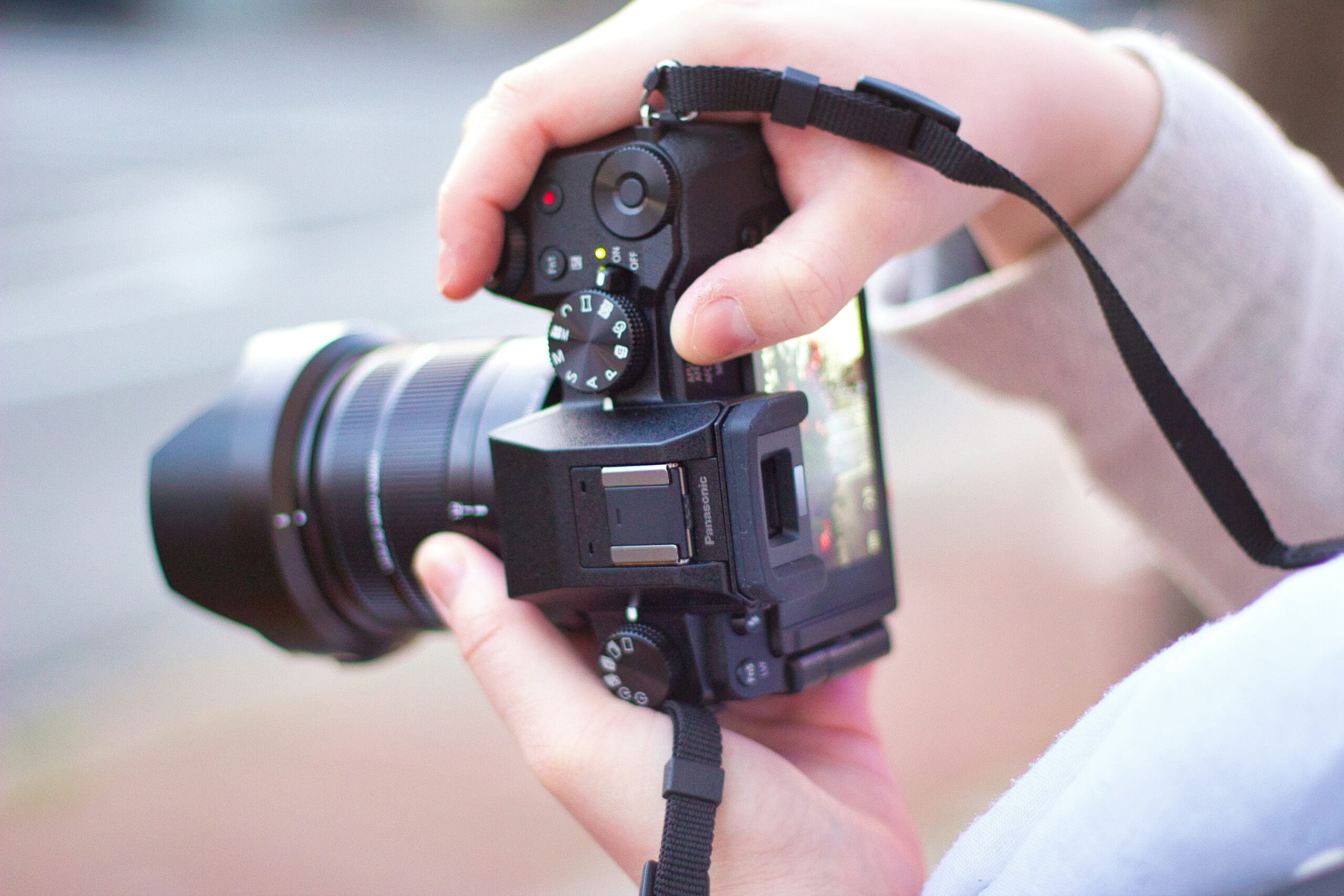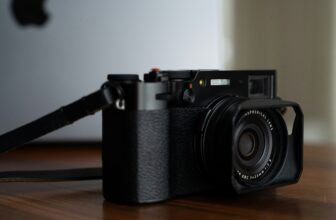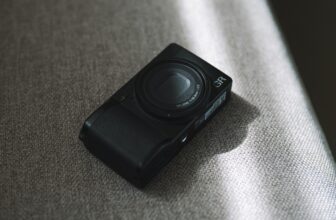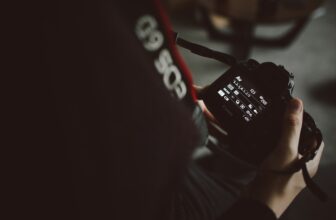Panasonic GX9 vs Ricoh GR III: Which Compact Camera Tops the Charts?

This post contains affiliate links which means I may receive a commission from purchases made through links. I will only recommend products I know personally used, and can attest to their high quality. Learn more on my private policy page
Choosing the perfect compact camera for your photography needs can be a daunting task. With an abundance of options on the market, it’s essential to know the strengths and weaknesses of each contender. In this article, we dive into an in-depth comparison of two popular compact cameras: the Panasonic Lumix GX9 and the Ricoh GR III. We will explore their specifications, design, image quality, and features in order to help you make an informed decision on the best option for your photography needs. Join us as we break down what sets these two cameras apart and discover which one comes out on top in the battle for compact camera supremacy.
Introduction to Panasonic GX9 and Ricoh GR III
As a photography enthusiast, one of the essential decisions you’ll make revolves around which camera best suits your needs. In today’s rapidly evolving digital world, compact cameras have carved a niche for themselves by providing exceptional image quality while maintaining portability and convenience. Two such prominent players in the compact camera market are the Panasonic Lumix GX9 and the Ricoh GR III.
The Panasonic Lumix GX9 is a highly versatile and functional mirrorless camera that caters to both enthusiasts and professionals alike. It boasts a sleek, durable design and offers a range of features that make it an attractive choice for travel, street, and everyday photography. With its Micro Four Thirds sensor, interchangeable lens system, and powerful image stabilization capabilities, the Lumix GX9 is designed to capture stunning images effortlessly, regardless of your photographic preferences.
On the other hand, the Ricoh GR III has built a cult-like following among street photographers, thanks to its compact form factor, fixed 28mm equivalent lens, and impressive image quality. Often praised for its portability and discreet appearance, the Ricoh GR III is perfect for capturing spontaneous and candid moments. With features like in-camera raw processing and a large APS-C sensor, the GR III offers impressive performance without compromising on size or convenience.
Through this comprehensive comparison of both compact cameras, you’ll gain a deeper understanding of the unique selling points and strengths of each model. By the end, you’ll be better equipped to decide which camera – the Panasonic Lumix GX9 or the Ricoh GR III – will serve as the ideal companion for your photography pursuits.
Key Features at a Glance
When it comes to choosing between the Panasonic GX9 and Ricoh GR III, understanding their key features and specifications is essential. In this section, we’ll provide you with a snapshot of the core differences between these two popular compact cameras. This quick reference guide will set the stage for a more in-depth comparison in the following sections, ensuring you have all the information you need to make an informed decision.
Let’s take a look at the primary specs and abilities of the Panasonic GX9 and Ricoh GR III:
- Sensor: Panasonic GX9 uses a 20.3 MP Micro Four Thirds sensor, while Ricoh GR III has a 24.2 MP APS-C sensor.
- Lens Mount: The Panasonic GX9 features the Micro Four Thirds lens mount, allowing for interchangeable lenses, while the Ricoh GR III has a fixed 28mm equivalent f/2.8 lens.
- Image Stabilization: The GX9 benefits from a 5-axis in-body stabilization system, whereas the GR III has a 3-axis system.
- Autofocus: AutoFocus capabilities differ, with the GX9 utilizing a 49-point contrast-detect system, while the GR III has a hybrid 117-point phase-detection and contrast-detection system.
- Viewfinder: The Panasonic GX9 is equipped with a 2.76M-dot tiltable electronic viewfinder, whereas the Ricoh GR III has an optional snap-on optical viewfinder accessory.
- Screen: Both cameras have 3″ screens, with the GX9 featuring a tilting touchscreen and the GR III a fixed touchscreen.
- Burst Shooting: The Panasonic GX9 offers a maximum burst rate of 9 fps, while the Ricoh GR III supports up to 4 fps.
- Video: Panasonic GX9 allows for 4K video at 30 fps or Full HD at 60 fps, while Ricoh GR III is limited to Full HD at 60 fps.
- Battery Life: The GX9 has a longer battery life, rated at 260 shots per charge, compared to the GR III’s 200 shots per charge.
As you consider your options between the Panasonic GX9 vs Ricoh GR III, keep these key differences in mind. In the following sections, we’ll dive deeper into each aspect of these cameras, helping you better understand and decide which one is ideally suited for your photography needs.
Body and Build: Comparing Design and Portability
When evaluating compact cameras, it is crucial to consider the design and portability aspects, as these factors can significantly affect your photography experience. In this section, we will examine the physical characteristics of the Panasonic GX9 and Ricoh GR III, delving into their unique design philosophies and the influence on daily use and portability.
Ergonomics and Handling
With compact cameras, ergonomics play a vital role in handling and comfort. The Panasonic GX9 has a sleek, versatile design with a comfortable grip and a tilting EVF (electronic viewfinder) that allows for various angled shots. Its control layout is intuitively designed, with an array of customizable buttons and dials that enable quick adjustments to suit your shooting preferences.
On the other hand, the Ricoh GR III sports a minimalist design with limited physical controls, making it an ideal choice for photographers seeking simplicity. While it lacks a built-in viewfinder, it compensates with a large, high-resolution touch screen for composing and reviewing images. The compact body and clean design make it a pocketable companion for everyday photography.
Weight and Dimensions
As you compare the Panasonic GX9 vs Ricoh GR III, you’ll notice some differences in size and weight. The Panasonic GX9 measures 4.88 x 2.83 x 1.84 inches and weighs 1.45 pounds (including battery and lens), making it the slightly larger and heavier option. The Ricoh GR III, measuring 4.3 x 2.4 x 1.3 inches and weighing only 0.60 pounds (including battery), is an ideal choice for photographers prioritizing minimalism and portability.
Materials and Built Quality
Both cameras are crafted from high-quality materials that contribute to their durability and premium feel. The Panasonic GX9 features a magnesium-alloy body with a textured finish, providing an excellent balance between durability and lightweight design. The Ricoh GR III also opts for a magnesium-alloy construction with a sleek, matte finish that exudes sophistication. While neither camera is fully weather-sealed, both offer dependable build quality to withstand daily wear and tear.
Design Philosophies and Impact on Portability
When it comes to design philosophies, the Panasonic GX9 focuses on offering a user-friendly experience with versatile features for various photography styles. This compact camera is ideal for those who value customization and flexibility while shooting. In contrast, the Ricoh GR III’s minimalist approach emphasizes simplicity and portability, making it a top choice for street photographers and casual shooters who prefer a straightforward shooting experience.
To sum up, the physical aspects of these compact cameras cater to varying preferences and needs. While the Panasonic GX9 boasts a user-friendly design with myriad controls and features, the Ricoh GR III champions simplicity and portability. Your choice between the two will rely on your specific requirements and the weight you place on factors like ergonomics, dimensions, and design philosophy.
Sensor Specifications: A Pixel-for-Pixel Breakdown
The heart of every camera is its sensor, and when comparing the Panasonic GX9 and Ricoh GR III, it’s essential to dive deep into their sensor specifications. Understanding these aspects will help you make an informed decision about which camera best suits your photography preferences in terms of image quality and overall capabilities. Let’s examine their megapixel count, sensor size, and image resolution.
Megapixel Count: Detail Matters
When it comes to sensor specifications, one crucial factor is the megapixel count. The Panasonic GX9 boasts a 20.3-megapixel Micro Four Thirds sensor, while the Ricoh GR III is equipped with a 24.2-megapixel APS-C sensor. As a result, the Ricoh GR III has a slight edge in terms of capturing more detailed images. Higher megapixel counts are beneficial for photographers who need to print large images or crop their photos without losing significant quality.
Sensor Size: Dynamic Range and Low Light Performance
Another vital factor in sensor specifications is their size. The Panasonic GX9’s Micro Four Thirds sensor measures 17.3 x 13 mm, while the Ricoh GR III’s APS-C sensor is larger at 23.5 x 15.6 mm. The bigger sensor in the Ricoh GR III provides a wider dynamic range, better low-light performance, and shallower depth-of-field capabilities, which can be advantageous for certain photography genres, such as portraits or low-light scenes.
Image Resolution: High-Resolution Photography
Image resolution, the final component of the pixel breakdown, determines the dimensions of the photographs you capture. The Panasonic GX9 can deliver images with a maximum resolution of 5184 x 3888 pixels, while the Ricoh GR III offers an even higher resolution of 6000 x 4000 pixels. This difference means that the Ricoh GR III can provide slightly larger prints or additional cropping flexibility without losing much image quality.
In conclusion, when comparing the sensor specifications between the Panasonic GX9 and Ricoh GR III, the Ricoh GR III appears to hold an advantage in terms of pixel breakdown and image quality. Its higher megapixel count and larger sensor size offer superior detail and low light capabilities. While both cameras have their unique strengths, understanding these key differences will help you make an informed decision that best serves your photography needs.
Lens and Optics: Fixed vs Interchangeable Systems
One of the most significant factors to consider when choosing a camera is its lens system. In this section, we’ll take a closer look at the lenses available for the Panasonic Lumix GX9 and the fixed lens of the Ricoh GR III. By understanding the differences between fixed and interchangeable lens systems, you’ll be better equipped to make an informed decision on the camera that best suits your photography needs.
Interchangeable Lenses: Flexibility and Versatility with the Lumix GX9
The Panasonic Lumix GX9 boasts a Micro Four Thirds lens mount, which provides you with a wide array of lens options from both Panasonic and third-party manufacturers. This interchangeable system offers photographers a highly versatile setup, as you can easily change lenses to accommodate different shooting scenarios, subjects, and environments. For instance, you might require a wide-angle lens for landscape photography, a telephoto lens for wildlife, or a macro lens for close-up subjects.
Moreover, investing in a system with interchangeable lenses allows for future lens upgrades, providing longevity and adaptability as your photography skills and requirements evolve over time.
Fixed Lens: Convenience and Quality with the Ricoh GR III
On the other hand, the Ricoh GR III features a fixed 18.3mm f/2.8 lens, which is equivalent to a 28mm focal length in a 35mm format. This prime fixed lens offers stunning image quality, sharpness, and a fast f/2.8 aperture that performs well in low-light situations. The 28mm focal length provides a versatile, wide-angle field of view suitable for street photography, landscapes, and even environmental portraiture.
A key advantage of the Ricoh GR III’s fixed lens is its compact and lightweight design. Without the need to carry additional lenses, the camera remains highly portable, making it easy to capture spontaneous shots on the go. Additionally, the lens is specifically tailored to the camera’s sensor, ensuring optimal performance and image quality.
However, a fixed lens system may limit your creative options due to the lack of focal length and aperture variety. If your photography requires a diverse range of lenses, the Ricoh GR III might not be the ideal choice for you.
In conclusion, both the interchangeable lens system of the Lumix GX9 and the fixed lens of the Ricoh GR III have their unique benefits and drawbacks. It ultimately comes down to your personal photography preferences, needs, and desired level of flexibility. By carefully considering the implications of each system on your photography, you’ll be better prepared to make an informed decision on the camera that’s right for you.
Autofocus Capabilities: Speed and Accuracy in Focus
When comparing the Panasonic GX9 and Ricoh GR III, autofocus capabilities play a vital role in assessing overall camera performance. In this section, you’ll learn about the speed and accuracy of both cameras’ autofocus systems, including the number of focus points, tracking abilities, and any unique features like eye-detection or touch-to-focus functionalities.
Focus Points and Autofocus Speed
The Panasonic GX9 comes equipped with 49 focus points, making it quick and easy for the autofocus system to lock onto subjects. Moreover, the GX9 boasts an improved autofocus speed of 0.07 seconds, thanks to its contrast-detection technology. This improvement ensures that you capture sharp, accurate images with minimal delay, especially when photographing dynamic subjects.
On the other hand, the Ricoh GR III features a hybrid autofocus system that combines phase-detection and contrast-detection. Not only does this approach contribute to a speedy 0.05-second autofocus time, but it also results in increased accuracy and reliable performance across various shooting scenarios.
Tracking Capabilities
Another aspect to consider when examining autofocus capabilities is the tracking performance of each camera. The Panasonic GX9 offers reliable tracking features, made possible with its Depth from Defocus (DFD) technology. This feature helps you maintain focus on moving subjects in real-time, ensuring that you capture the perfect shot in situations like sports or wildlife photography.
As for the Ricoh GR III, its hybrid autofocus system enables smooth and precise tracking, ensuring consistent, accurate focus on subjects in motion. While the tracking capabilities of both cameras are commendable, it ultimately comes down to your specific photography needs and preferences.
Unique Autofocus Features
In addition to speed, accuracy, and tracking, both cameras boast unique autofocus features that cater to different shooting styles and requirements. The Panasonic GX9 offers innovative technologies like Post Focus and Focus Stacking, which allow you to adjust and refine your focus after taking a photo. Additionally, touch-to-focus functionality on the GX9’s rear LCD screen provides a user-friendly, intuitive way to select your focus point.
As for the Ricoh GR III, the camera features a Snapshot Focus mode, which lets you preset a focus distance for quicker manual focus adjustments. This can be especially helpful for street photography, where speed is crucial. Moreover, the GR III also includes a Macro mode, enabling you to capture stunning close-ups with excellent detail and clarity.
In summary, the autofocus capabilities of the Panasonic GX9 and Ricoh GR III both offer impressive speed and accuracy. While the GX9’s unique features cater to users who appreciate creative flexibility, the GR III’s ability to meet the needs of street photographers and macro enthusiasts may hold greater appeal for others. Understanding your own photography needs will ultimately help you make the best decision when choosing between these two remarkable cameras.
Image Quality: Color Reproduction and Sharpness
As a photographer, you prioritize image quality when considering a new camera. In this section, we will explore the color reproduction and sharpness of the pictures taken with the Lumix GX9 and the Ricoh GRIII. We will assess the quality of JPEGs straight from the camera and discuss how RAW files provide flexibility for post-processing.
Color Reproduction
The Lumix GX9 delivers vibrant and accurate colors, making it an excellent choice for portrait and landscape photographers. The camera’s color science is designed to provide natural-looking images, allowing you to capture lifelike scenes without the need for substantial post-processing. Additionally, the GX9 offers a range of color profiles, giving you creative options for different shooting scenarios.
On the other hand, the Ricoh GRIII has a reputation for its unique rendering of colors, imparting a distinct character to the images. The Ricoh GRIII’s color reproduction is subtle and can be more subdued compared to the GX9. This renders the images with a more film-like aesthetic, which is appreciated by street photographers and nostalgic photography enthusiasts.
Sharpness
Sharpness is another crucial factor when determining image quality. The Lumix GX9, paired with the right lenses, can produce exceptionally sharp images. The camera’s in-body image stabilization system helps counteract camera shake, resulting in sharper images even in challenging shooting situations. Furthermore, the GX9’s micro four-thirds sensor retains excellent detail and clarity, ensuring that your photographs display a high level of sharpness.
The Ricoh GRIII sports a fixed lens with a sharpness that rivals many interchangeable lenses. The camera’s reliance on a fixed 28mm f/2.8 lens means that Ricoh engineers have optimized it for the camera’s APS-C sensor. Consequently, you can expect crisp and detailed images from the Ricoh GRIII. The lens’s compact design and sharpness make it an excellent tool for street and travel photography, where gear minimalism and small size are essential.
JPEG and RAW files
When comparing the straight-out-of-camera JPEG performance of the Lumix GX9 and Ricoh GRIII, both cameras deliver high-quality results. The GX9’s natural color reproduction and the GRIII’s unique color signature shine through their respective JPEGs. However, if you wish to dive deeper into post-processing, both cameras provide RAW file support. This gives you the flexibility to adjust colors, sharpness, and other parameters with more precision, allowing you to tweak your images to your liking in post-processing software.
In conclusion, both the Lumix GX9 and Ricoh GRIII deliver outstanding image quality, with distinctive approaches to color reproduction and sharpness. Depending on your preferences and the type of photography you enjoy, you may gravitate towards the GX9’s natural and vibrant colors or the GRIII’s distinct and subdued color palette. Both cameras deliver excellent sharpness, with the GX9 providing the flexibility of interchangeable lenses and the GRIII offering a high-quality fixed lens. Whichever camera you choose, you can be confident in the image quality they produce.
Low Light Performance: Sensitivity and Noise Reduction
When shooting in challenging lighting conditions, a camera’s low light performance capabilities can make all the difference. In this section, we will explore how the Panasonic GX9 and Ricoh GR III perform under such conditions, focusing on their sensitivity, noise reduction features, and overall image quality in low light environments.
Sensitivity: ISO Ranges
The ISO range of a camera dictates its sensitivity to light. A higher ISO allows for better performance in low light situations, though it may result in increased noise. The Panasonic GX9 offers an ISO range of 200 to 25600, which can be extended down to 100 for improved performance in favorable lighting conditions. On the other hand, the Ricoh GR III features an ISO range of 100 to 102400, providing broader flexibility in various lighting scenarios.
Although both cameras have their strengths, the Ricoh GR III’s wider ISO range allows for greater adaptability when capturing images in low light settings. However, it is essential to consider the noise performance alongside the ISO range to determine each camera’s overall low light capabilities.
Noise Reduction: Managing Grain and Image Quality
As ISO values increase, so does the likelihood of image noise. Both the Panasonic GX9 and the Ricoh GR III feature in-built noise reduction software to manage this issue. In the case of the Panasonic GX9, its Venus Engine processor aims to provide natural colors, excellent detail, and minimal noise even at high ISO settings. The Ricoh GR III utilizes a GR Engine 6 that ensures sharpness and clarity while suppressing noise.
Comparing the two cameras, the Ricoh GR III maintains a significant edge in noise performance due to its high ISO values and effective noise reduction system. Although the Panasonic GX9 produces respectable images in low light conditions, the Ricoh GR III excels in delivering cleaner, higher-quality results with minimal noise.
Final Thoughts on Low Light Performance
Considering the ISO ranges and noise reduction capabilities of the Panasonic GX9 and Ricoh GR III, the Ricoh GR III emerges as the stronger contender in low light situations. Its wider ISO range and superior noise reduction technology allow photographers to confidently capture images even in dimly lit environments. While the Panasonic GX9 is more than capable of producing decent low light images, those who prioritize low light performance may find the Ricoh GR III better suited to their needs.
User Interface and Navigation: Operating the Cameras
In this section, we take a closer look at the user interface and navigation of the Panasonic GX9 and Ricoh GR III cameras. Knowing how to operate cameras effectively is crucial for any photographer, from amateurs to professionals. With that in mind, we will compare the layout of buttons and dials, touchscreens, menu navigability, and custom settings available in both models.
Layout of Buttons and Dials
The Panasonic GX9 offers a plethora of customizable buttons, dials, and even a dedicated exposure control wheel. The layout is user-friendly, making it convenient for photographers to quickly adjust settings on the fly. In contrast, the Ricoh GR III has fewer buttons due to its minimalist design. However, this doesn’t hinder its functionality, as it still provides users with quick access to essential settings via several customizable function buttons.
Touchscreen Responsiveness
Both the Panasonic GX9 and Ricoh GR III feature touchscreens, allowing users to interact with their camera in intuitive ways. The GX9’s touchscreen is fully articulated, offering flexibility when framing shots or navigating the menu. Ricoh’s GR III touchscreen is fixed but delivers excellent responsiveness and effective touch-to-focus functionality. Overall, both cameras ensure seamless interaction with their respective touchscreens.
Menu Navigability
When it comes to menu navigation, the Panasonic GX9 and Ricoh GR III both offer clear, organized menu systems. The GX9 presents an extensive yet well-structured menu, allowing users to dive deep into customizing settings to suit their personal preferences. On the other hand, the GR III features a more simplistic menu, with an emphasis on offering quick access to essential settings. This makes the GR III an appealing choice for photographers seeking a more straightforward, less complex menu.
Custom Settings and Quick Access Controls
The Panasonic GX9 and Ricoh GR III each provide quick access to custom settings, streamlining the workflow for users of both cameras. The GX9 excels when it comes to customization options, with a dedicated button to access custom settings and configure the camera’s behavior according to the user’s preferences. Meanwhile, the GR III’s minimalist design allows for quick access to essential settings via its customizable function buttons, making it possible for photographers to adapt the camera to their specific needs quickly.
In conclusion, both the Panasonic GX9 and Ricoh GR III offer impressive user interface and navigation capabilities. The GX9 certainly stands out with its extensive customization options, while the GR III focuses on simplicity and ease of use. Ultimately, the choice comes down to the photographer’s individual preferences and needs when operating their camera.
Video Features: Filming with Panasonic GX9 vs Ricoh GR III
As you evaluate the video capabilities of the Lumix GX9 and Ricoh GR III, it’s crucial to consider their resolution options, frame rates, autofocus, and any unique video features they offer. This comparison will enlighten you on which camera is best suited for your videography needs.
Resolution Options and Frame Rates
The Panasonic Lumix GX9 offers 4K video recording at 30/24 fps and Full HD (1080p) video at 60/30/24 fps. This allows you to create striking 4K videos or opt for Full HD at higher frame rates for smoother motion. The 4K video quality is sharp and detailed, making it ideal for professional projects or personal ventures.
On the other hand, the Ricoh GR III is more limited when it comes to video recording options. It does not support 4K video and instead offers Full HD (1080p) video recording at 60/30/24 fps. While it may not have the 4K capabilities of the Lumix GX9, its Full HD videos are still clear and serve as a satisfactory option for casual recording or vlogging.
Autofocus in Video Mode
Both the Lumix GX9 and Ricoh GR III incorporate autofocus systems that function efficiently during video recording. The Lumix GX9 uses a Contrast AF system, which quickly and accurately acquires focus in most filming conditions. Additionally, it offers features like subject-tracking and face detection, which help to maintain sharp focus during video recording.
The Ricoh GR III also boasts a dependable autofocus system while filming, utilizing its hybrid AF system to capture continuously sharp subjects. However, it may not be as fast or accurate as the Lumix GX9’s AF in certain situations, particularly in low-light environments.
Unique Video Features
The Panasonic Lumix GX9 presents a variety of unique video features such as Focus Peaking, which assists in manual focus by highlighting in-focus areas. Moreover, it sports an electronic shutter, silent mode, and HDMI output, giving professional videographers additional tools to enhance their craft. Unfortunately, the GX9 does not have in-body image stabilization during video recording, which may require you to invest in a stabilized lens or external stabilizer for steadier footage.
Despite the Ricoh GR III not offering many unique video features, it does provide the advantage of in-body image stabilization (IBIS), a three-axis Shake Reduction system that helps to stabilize the footage during handheld shooting. This can be particularly useful when filming on the go or in dynamic situations without the need for additional stabilization equipment.
Considering the video features, quality, and advanced options of the Panasonic Lumix GX9, it’s evident that this camera cater more towards videography enthusiasts. However, if your primary focus is photography and you only require occasional video capabilities, the Ricoh GR III might be a more suitable choice for your needs. As always, it’s essential to weigh the significance of the video features against your individual requirements and preferences while determining the right compact camera for you.
Conclusion: Reflections on the Panasonic Lumix GX9 and Ricoh GR III
Having taken a detailed look into the specifications, features, and performance of the Panasonic Lumix GX9 and Ricoh GR III, we have gained a comprehensive understanding of what these compact cameras have to offer. The choice between these two compelling options ultimately depends on your individual photography needs and preferences.
For avid photographers seeking versatility and the potential for creative growth, the Panasonic Lumix GX9’s interchangeable lens system, wider autofocus capabilities, and more robust video features may prove to be the better fit. On the other hand, those who prioritize portability, exceptional image quality, and a streamlined shooting experience may find the Ricoh GR III’s fixed lens system, superior sharpness, and quick operation more attractive.
In conclusion, both the Panasonic Lumix GX9 and Ricoh GR III are remarkable compact cameras, each with its unique strengths and weaknesses. Careful consideration of their differences should guide you towards the right choice, ensuring a rewarding photography journey and impeccably captured memories.
FAQ
What are the main differences between the Panasonic GX9 and Ricoh GR III?
The main differences between these two compact cameras include sensor size, autofocus capabilities, lens systems, and video features. The Panasonic GX9 has a slightly larger sensor, interchangeable lens system, and more advanced video capabilities, while the Ricoh GR III offers a fixed lens and faster autofocus.
Which camera performs better in low light conditions?
Both cameras perform well in low light conditions, but the Panasonic GX9 has a slight edge due to its larger sensor and wider ISO range, allowing users to capture cleaner images at higher sensitivities. The Ricoh GR III also performs well at higher ISOs, but its fixed lens may limit its versatility in low light situations.
Is the Panasonic GX9 or Ricoh GR III more suitable for video recording?
The Panasonic GX9 is more suitable for videography enthusiasts due to its advanced video features, including 4K recording, a variety of frame rates, and image stabilization during filming. The Ricoh GR III also offers video recording capabilities, but they are more limited compared to the GX9.
What is the advantage of the Ricoh GR III’s fixed lens system compared to the interchangeable lenses of the Panasonic GX9?
The fixed lens of the Ricoh GR III provides a high-quality, compact, and lightweight solution for photographers who prioritize simplicity and portability. On the other hand, the interchangeable lens system of the Panasonic GX9 offers greater versatility and the ability to adapt to various shooting situations and styles.
How do the user interfaces of the Panasonic GX9 and Ricoh GR III compare?
The user interfaces of both cameras are well-designed, with intuitive navigational controls and customizable settings. The Panasonic GX9 features a touch screen and more physical buttons, while the Ricoh GR III has a more straightforward design with a limited number of buttons.
This post contains affiliate links which means I may receive a commission from purchases made through links. I will only recommend products I know personally used, and can attest to their high quality. Learn more on my private policy page






